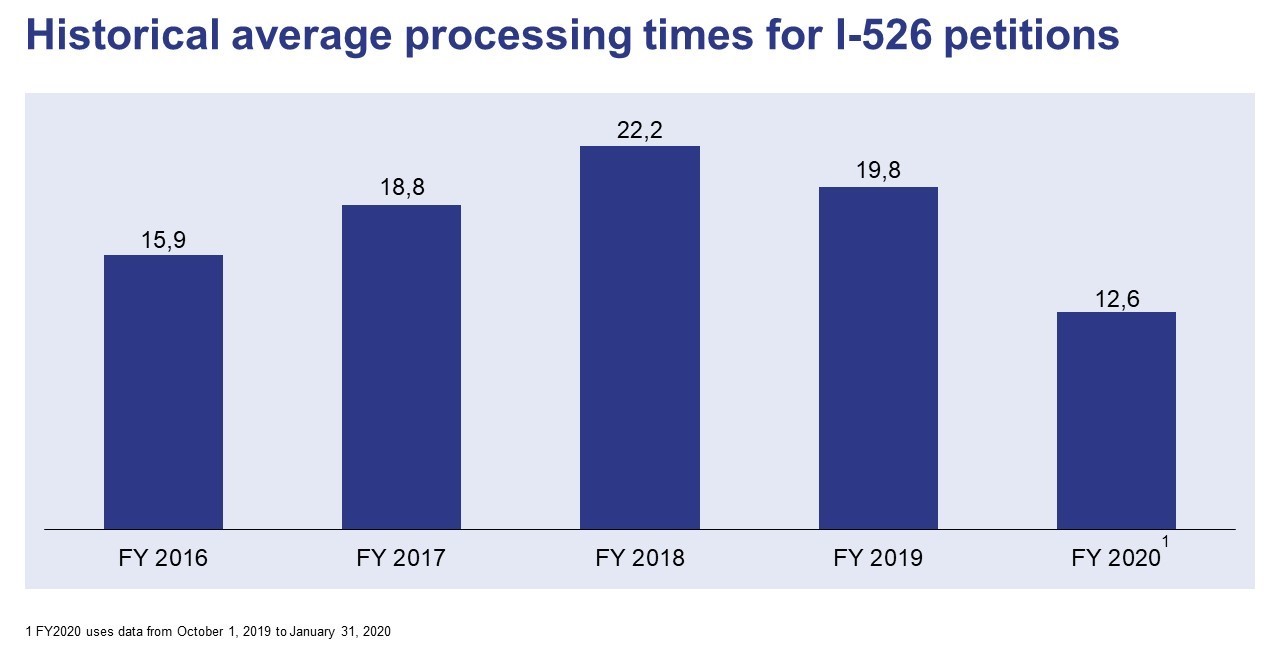Every cloud has a silver lining, and for some EB-5 investors, the silver lining of the COVID-19 pandemic is faster processing times for I-526 petitions. Because the I-526 petition is a complex form requiring numerous supplementary documents and each EB-5 investor’s circumstances are different, processing times inevitably differ, but recent months have seen a stark decrease in the historical average processing times. While EB-5 investors should not necessarily expect their I-526 petitions to be adjudicated faster, many may find themselves pleasantly surprised.
What Is the I-526?
Form I-526 is the petition that starts a foreign investor’s EB-5 journey. Investors typically file it soon after transferring their EB-5 capital to the account designated in their chosen EB-5 project’s documentation—usually an escrow account. Generally, it takes one to two years to receive an adjudication, although processing times vary based on a number of factors.
EB-5 investors are required to accompany their I-526 petition with a large number of documents. They must not only prove that they have invested the required amount of capital—which varies based on the targeted employment area (TEA) status of the project—but also that they have obtained the funds lawfully. In addition, investors must provide evidence that the new commercial enterprise (NCE) is eligible to participate in the EB-5 program and is conducting business activities.
Another major requirement is proving the NCE will create the 10 new full-time jobs necessary for the successful completion of the EB-5 program. Investors should include a business plan, hiring schedule, and an economic report calculated using accepted methodologies.
Finally, EB-5 investors must demonstrate that they are sufficiently involved in the management of the NCE. For most regional center investors, simply being a limited partner and voting on business matters is sufficient, so such EB-5 investors are not tied to the location of their EB-5 project.
Once an EB-5 investor’s I-526 petition is approved, he or she may apply through the National Visa Center (NVC) for a U.S. green card, if he or she is applying from overseas, or submit Form I-485 to adjust his or her immigrant status, if he or she is applying from within the United States. The conditional permanent resident status the investor and his or her family receive following a successful application is valid for two years, after which the investor must submit an I-829 petition to remove the conditions.
Recent Downtrend in I-526 Average Processing Times

I-526 adjudication has never been a fast process, with EB-5 investors almost always required to wait at least a year and often longer. Although processing times rose steadily from FY2016 to FY2018, FY2019 marked the beginning of a downtrend, which has continued strong into FY2020. The current data for FY2020, which spans from October 1, 2019, to January 31, 2020, reveals a five-year record low average processing time for I-526 petitions—just over one year. This is a nearly 40% drop, one of the largest in EB-5 history.
With the COVID-19 pandemic raging on, shutting down U.S. consulates worldwide and United States Citizenship and Immigration Services (USCIS) offices domestically, the Immigrant Investor Program Office (IPO) continues to adjudicate I-526 petitions. It is reasonable to speculate that the pandemic could push the adjudication times down even further, as the IPO may no longer be able to perform activities that otherwise would have diverted its attention from I-526 petitions.










